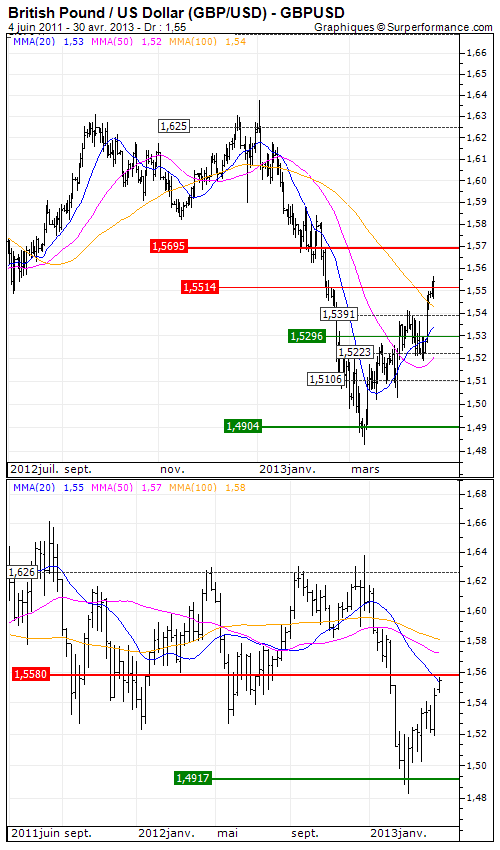British Pound / US Dollar (GBP/USD) : The United Kingdom avoided recession
By Alexandre Nutte
While some economists feared that London announces a third recession in five years following the announced contraction during the fourth quarter of 2012, the United Kingdom GDP has however increased by 0.3% between January and March of 2013, beating estimates and improving the credibility of the recent move of the Bank of England. But the bank may take advantage of the good performance of this indicator to opt for the status quo waiting for the upcoming arrival of its new governor, Mark Carney, on next 1st July.
Conversely, even if the U.S. economy grew by 2.5% year over year at the first quarter, against only +0.4% at the Q4 of 2012, the data disappoint analysts which estimated a growth superior to 3%. There is many other mitigated indicators which allow us to anticipate easily that the Fed will pursue its quantitative easing at the same rhythm in the coming months, decision which should be confirmed at the end of the next meeting, on next 1st May.
The renewed vigor of the United Kingdom activity combined with the disappointment that the world’s largest economy arose may thus contribute to widen the gap between the monetary policies of the two countries and allow the pound sterling to continue its advance.
Technically, after consolidating on our 1.5223 support, the GDP offered to prices the necessary momentum to break out successively the 20-day moving average and the 1.5391 major resistance. While a new consolidation is necessary, we are now long following the trend to anticipate an upcoming breakout of 1.5514 and an acceleration towards USD 1.5695, new level since the beginning of February.




